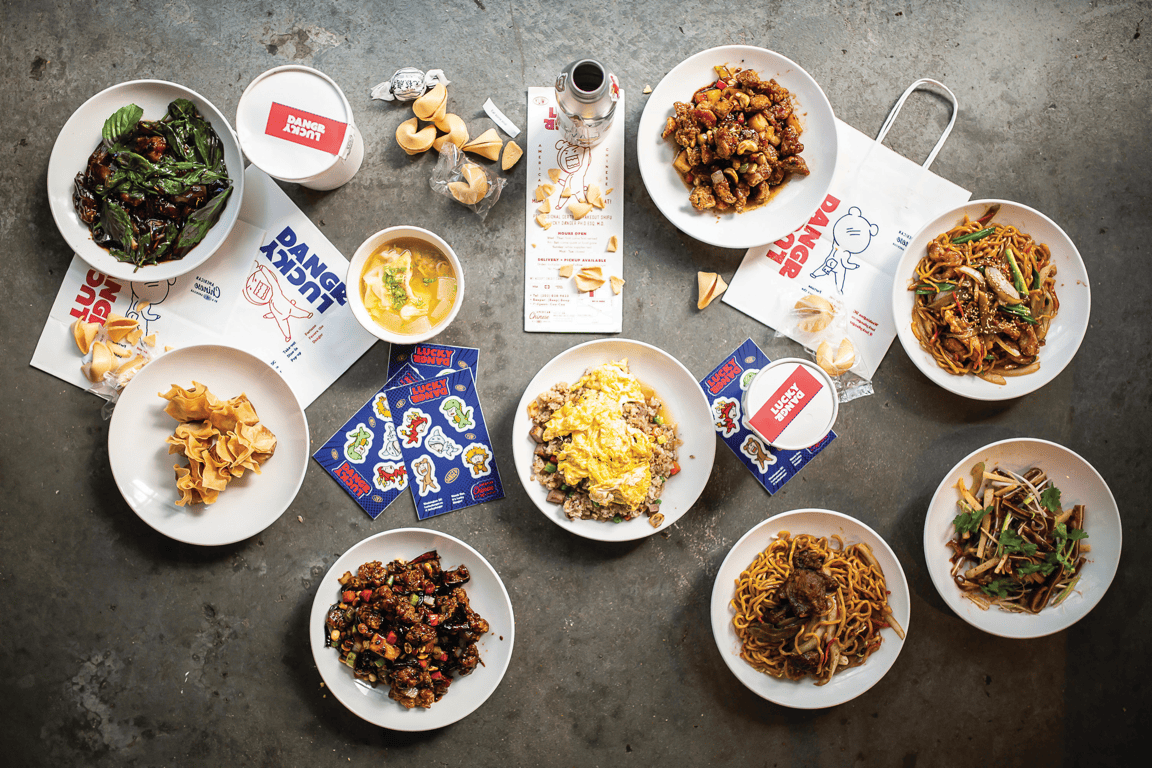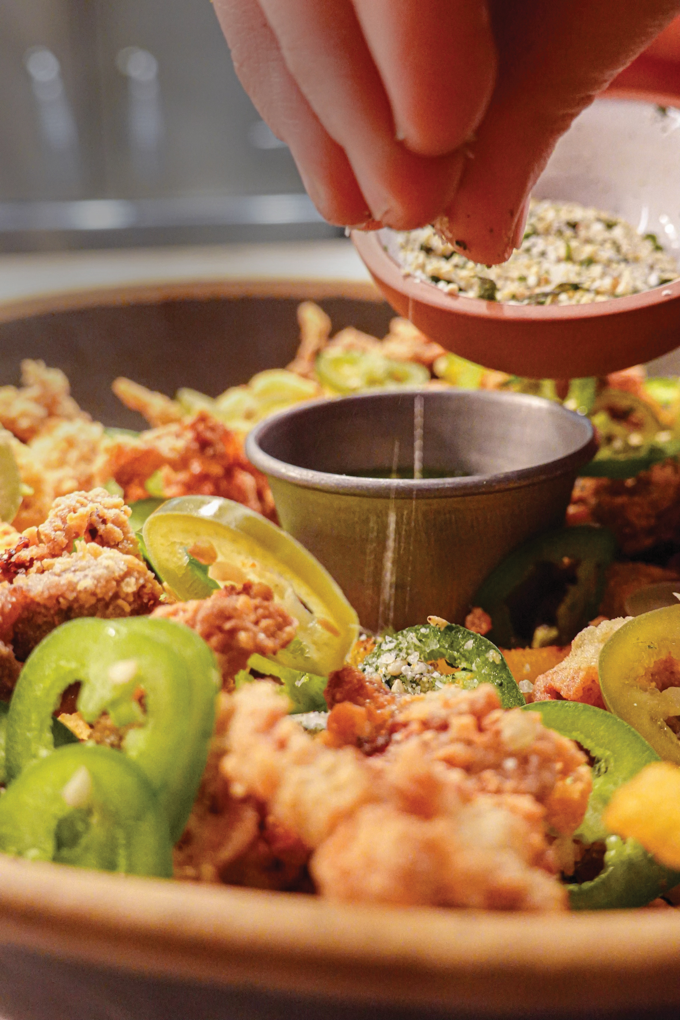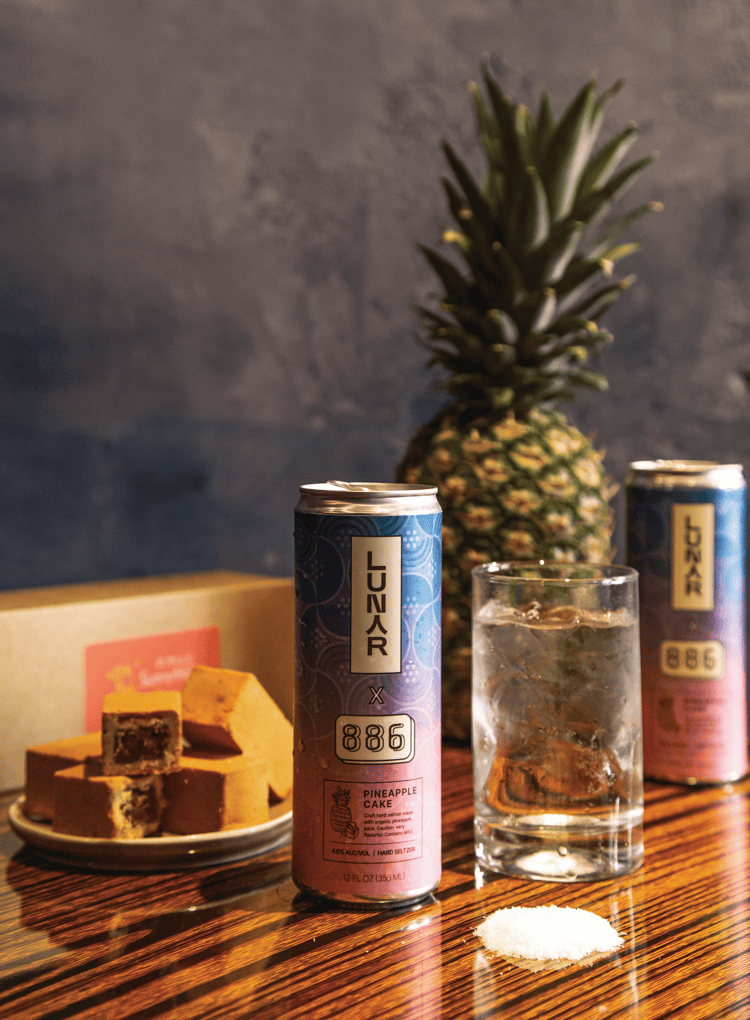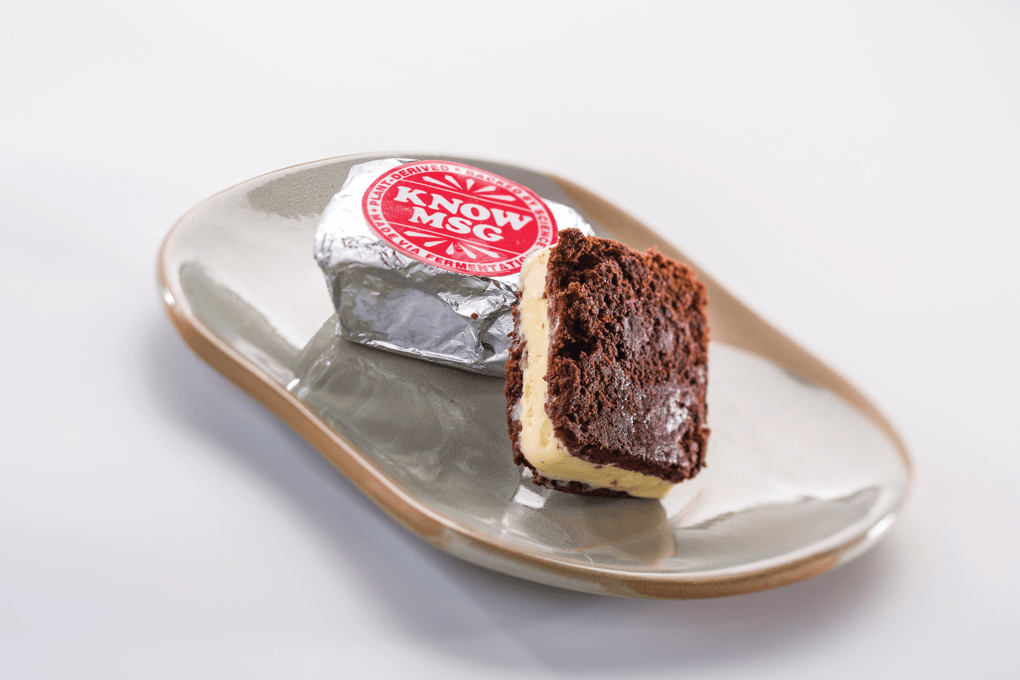
MSG Momentum
Exploring the potential of this powerhouse flavor booster
MSG Momentum
Exploring the potential of this powerhouse flavor booster
By Katie Ayoub
February 20, 2024
By Katie Ayoub
February 20, 2024
MSG is entering a new chapter in its storied history, becoming a bona fide hero of flavor development after years of being unjustly vilified. That’s great news for menu developers, giving them freedom to leverage the power of MSG. As many chefs know, MSG offers an effective and efficient way of introducing umami and enhancing flavor. Monosodium glutamate is typically created by fermenting carbohydrates, like sugarcane or corn. The crucial element in this process is glutamic acid, an amino acid naturally present in foods like tomatoes and cheese.
Microorganisms play a role in converting sugars into glutamic acid during fermentation, and subsequently, this acid is mixed with sodium to produce MSG. First created in 1908 by Japanese chemist Kikunae Ikeda, today it’s finding new footing in American menu development. We’re not only seeing broader acceptance of MSG as a foundational flavor builder but its emerging status as a celebrated high-impact ingredient.
A quick survey across the foodservice landscape paints a picture of MSG’s shifting positioning and growing opportunity. The now famous MSG Martini from Bonnie’s in Brooklyn, N.Y., threw down the gauntlet, not only using the ingredient in an unexpected application but shouting it from the rooftops and gaining national media attention. At Lucky Danger in Arlington, Va., Tim Ma, founder and CEO of the American-Chinese restaurant, seasons most menu items with MSG and has served as a key ambassador in broadcasting MSG’s flavor story, reclaiming its narrative and repositioning its place in the flavor toolkit. “MSG expands flavor and adds depth while allowing you to reduce the use of sodium. It makes flavors coat your tongue in a really satisfying way,” says Ma. “We have it at our wok station and use it as a finisher for almost everything that comes out of the kitchen.” Hot Joy in San Antonio takes a similar approach. Its famed Crushed Cucumbers are seasoned with lime pickle, mint, dill, chile oil, fried garlic and MSG.
Mission Chinese in San Francisco simply provides shakers of MSG at its tabletops, buddying up next to the salt and pepper. By destigmatizing MSG, these tactics are reinforcing David Chang’s reminder a number of years back, when he said, “MSG is just a seasoning that comes from a different country.” The optics behind tabletopping MSG are huge, signaling an effort to champion the ingredient and normalize its consumer perception.
 Photo Credit: Rebecca Nottonson
Photo Credit: Rebecca Nottonson At Boston’s All That Fish + Oyster, fried clams are finished with an umami seasoning blend that features salt, powdered kelp, powdered shiitakes, black pepper, Sichuan peppercorn, sugar and MSG.
In another recent sign of welcoming MSG back into the zeitgeist, Cook’s Illustrated recently ran a guide on how to use MSG as a flavor booster in sauces, dressings and more. “As chefs, there’s an opportunity to just come at MSG head-on,” says Nate Weir, VP of culinary, Modern Market Eatery. “We can move beyond using it as a sneaky flavor enhancer and bring it front and center. I love MSG—I think a lot of chefs do. I use it frequently in my home kitchen. Now, chefs can bring it into menu development, almost like a reclamation project, and feel good about it.”
Reclamation indeed. Today, the movement sees a dismantling of the unfair narrative that was woven back in the 1960s when an opinion piece published in the New England Journal of Medicine linked MSG to unpleasant symptoms and saddled the malaise with a racist term: “Chinese restaurant syndrome.” That article set the tone for the next 50 years, and although the ingredient remained in a variety of household favorites, like Doritos and canned soups, MSG was viewed as “bad” and pulled from the pantries of many foodservice brands. Fast-forward and today MSG holds a new place in American culture thanks to health studies that unravel its negative narrative, culinary ambassadors who both raise awareness of and celebrate MSG, and a modern demand for umami-rich flavor builders. “Even if Gen X and Boomers still hold onto its false narrative, Millennials and Gen Z carry none of that baggage,” says Mike Kostyo, VP of Menu Matters consultancy. In fact, taking up MSG as a social justice cause falls in line with the values of younger demographics and is yet another driver behind this trend.
 Photo Credit: MAKFam
Photo Credit: MAKFam At Denver’s MAKfam, serving up “tradition-inspired” Chinese cuisine, co-owners and spouses Kenneth Wan and Doris Yuen are proud to feature MSG throughout the menu, including in the cleverly named MSGin cocktail.
Flavor, Flavor, Flavor
Whether called out on the menu as a high-impact ingredient or used as a foundational element, MSG is primed for modern menus. “MSG has this unique and very real flavor impact,” says Dan Coudreaut, chef/owner of Lantern Pizza Co. and former executive chef and VP of culinary innovation at McDonald’s. “Chefs and restaurant owners who use it understand it gives them a competitive edge in developing umami. And, now, without any clear connection to the negative health attributes, why wouldn’t you take advantage of that competitive edge?”
Nemo Bolin, culinary director of ES Hospitality, calls on MSG for a few specific menu items at Boston’s All That Fish + Oyster. He features it in his seasoning blend for fried clams, combining MSG with kosher salt, powdered kelp, powdered shiitakes, black pepper, Sichuan peppercorn and sugar. “The kelp introduces a natural brininess, and shiitake adds the earthy backbone,” says Bolin. “We include MSG to boost the savoriness of the dish.”
Lunar, a boutique hard seltzer brand, uses MSG as both a critical flavor enhancer and a market differentiator, weaving the use of the ingredient into its marketing. Lunar co-founder Kevin Wong cleverly employs MSG in two limited-release collab flavors, working with Eric Sze, chef/co-owner of 886 in New York and Calvin Eng, chef/owner of Bonnie’s in Brooklyn, N.Y. Both collaborations sold out quickly. The Pineapple Cake, developed with Sze, reimagines the classic Taiwanese pastry using pineapple juice, sea salt and a pinch of MSG. “We wanted to emulate the structure of the pineapple cake pastry,” says Wong. “I’m Taiwanese American, and pineapple cake is practically the national dish of Taiwan. The pastry itself has a sweet and tart pineapple jam that’s enveloped in this buttery shortbread crust. We asked ourselves, ‘How do we capture the mouthfeel and the aroma of the pastry crust without losing the tartness and juiciness of the fruit?’ We turned to salt and MSG as a way to accentuate the aroma and body of the shortbread extract that we used.”
Lunar’s collab with Eng was equally revelatory. The Salted Kumquat Hard Seltzer stars kumquat and tangerine juices, sea salt and a dash of MSG. “What’s unique about including both salt and MSG here is that it transforms the drink away from a one-dimensional citrus flavor,” says Wong. “It’s equal parts sweet, tart and salty. When you use MSG in a beverage formulation, it adds depth from the beginning of a sip to the end of that sip. It’s amazing.” MSG’s ability to accentuate and extend flavor is its modern superpower.
 Photo Credit: Lunar
Photo Credit: Lunar Hard seltzer brand Lunar developed The Pineapple Cake seltzer with Eric Sze, chef/co-owner of 886 in New York. It reimagines the classic Taiwanese pastry using pineapple juice, sea salt and a pinch of MSG.
Harnessing umami is critical in developing contemporary flavor builds that deliver on complexity. Modern foodservice has a clear directive in highlighting and balancing contrasting flavors. At the heart of both the sweet-spicy and sweet-savory trends is balance. Ingredients loaded with glutamates like miso and soy sauce are paving the way to the use of MSG as a surprising element in those flavor combinations.
“For me, it’s that fascination of being able to provide a quick boost of umami in a controlled way by using MSG as an ingredient, exploring its potential and having fun with it,” says Weir. “We’re introducing LTOs this year, running menu items that we’re telling a story around. As I’ve been thinking about ideas for that, I’m intrigued by the thought that we could use MSG on a sandwich build or in a dressing, while also giving us an opportunity to talk about the ingredient and educate our guests.”
MSG’s role in plant-forward cooking cannot be understated. “With MSG, you’re opening up the volume of flavor,” says Kostyo. “And at a time when we’re exploring how exciting vegetables can be, MSG serves up a great opportunity to amp up those flavors.”
 Photo Credit: David Siegel / www.insightstudioinc.com
Photo Credit: David Siegel / www.insightstudioinc.com At last summer’s Flavor Experience, Ajinomoto wowed attendees with its MSG Ice Cream Sandwiches, demonstrating how well the ingredient does in sweet applications.
The Opportunity
Beyond its role as a flavor booster, MSG gives restaurant brands an opportunity to voice the modern narrative, educating consumers and dispelling biases. “We’re at a turning point and the narrative has shifted, but there’s further work that needs to be done by the industry,” says Tim Ma. “Look at innovations like sous vide, which used to suffer from the stigma around the boil-in-a-bag method, and now it’s seen as a way to enhance the end product. Today, you can go to Sur La Table and get an immersion circulator. With MSG, we need innovators to continue the conversation and advocate for it. Apart from the social justice element, which is important, MSG’s flavor payoff is worth it.”
MSG is entering a new chapter in its storied history, becoming a bona fide hero of flavor development after years of being unjustly vilified. That’s great news for menu developers, giving them freedom to leverage the power of MSG. As many chefs know, MSG offers an effective and efficient way of introducing umami and enhancing flavor. Monosodium glutamate is typically created by fermenting carbohydrates, like sugarcane or corn. The crucial element in this process is glutamic acid, an amino acid naturally present in foods like tomatoes and cheese.
Microorganisms play a role in converting sugars into glutamic acid during fermentation, and subsequently, this acid is mixed with sodium to produce MSG. First created in 1908 by Japanese chemist Kikunae Ikeda, today it’s finding new footing in American menu development. We’re not only seeing broader acceptance of MSG as a foundational flavor builder but its emerging status as a celebrated high-impact ingredient.
A quick survey across the foodservice landscape paints a picture of MSG’s shifting positioning and growing opportunity. The now famous MSG Martini from Bonnie’s in Brooklyn, N.Y., threw down the gauntlet, not only using the ingredient in an unexpected application but shouting it from the rooftops and gaining national media attention. At Lucky Danger in Arlington, Va., Tim Ma, founder and CEO of the American-Chinese restaurant, seasons most menu items with MSG and has served as a key ambassador in broadcasting MSG’s flavor story, reclaiming its narrative and repositioning its place in the flavor toolkit. “MSG expands flavor and adds depth while allowing you to reduce the use of sodium. It makes flavors coat your tongue in a really satisfying way,” says Ma. “We have it at our wok station and use it as a finisher for almost everything that comes out of the kitchen.” Hot Joy in San Antonio takes a similar approach. Its famed Crushed Cucumbers are seasoned with lime pickle, mint, dill, chile oil, fried garlic and MSG.
Mission Chinese in San Francisco simply provides shakers of MSG at its tabletops, buddying up next to the salt and pepper. By destigmatizing MSG, these tactics are reinforcing David Chang’s reminder a number of years back, when he said, “MSG is just a seasoning that comes from a different country.” The optics behind tabletopping MSG are huge, signaling an effort to champion the ingredient and normalize its consumer perception.
 Photo Credit: Rebecca Nottonson
Photo Credit: Rebecca Nottonson At Boston’s All That Fish + Oyster, fried clams are finished with an umami seasoning blend that features salt, powdered kelp, powdered shiitakes, black pepper, Sichuan peppercorn, sugar and MSG.
In another recent sign of welcoming MSG back into the zeitgeist, Cook’s Illustrated recently ran a guide on how to use MSG as a flavor booster in sauces, dressings and more. “As chefs, there’s an opportunity to just come at MSG head-on,” says Nate Weir, VP of culinary, Modern Market Eatery. “We can move beyond using it as a sneaky flavor enhancer and bring it front and center. I love MSG—I think a lot of chefs do. I use it frequently in my home kitchen. Now, chefs can bring it into menu development, almost like a reclamation project, and feel good about it.”
Reclamation indeed. Today, the movement sees a dismantling of the unfair narrative that was woven back in the 1960s when an opinion piece published in the New England Journal of Medicine linked MSG to unpleasant symptoms and saddled the malaise with a racist term: “Chinese restaurant syndrome.” That article set the tone for the next 50 years, and although the ingredient remained in a variety of household favorites, like Doritos and canned soups, MSG was viewed as “bad” and pulled from the pantries of many foodservice brands. Fast-forward and today MSG holds a new place in American culture thanks to health studies that unravel its negative narrative, culinary ambassadors who both raise awareness of and celebrate MSG, and a modern demand for umami-rich flavor builders. “Even if Gen X and Boomers still hold onto its false narrative, Millennials and Gen Z carry none of that baggage,” says Mike Kostyo, VP of Menu Matters consultancy. In fact, taking up MSG as a social justice cause falls in line with the values of younger demographics and is yet another driver behind this trend.
 Photo Credit: MAKFam
Photo Credit: MAKFam At Denver’s MAKfam, serving up “tradition-inspired” Chinese cuisine, co-owners and spouses Kenneth Wan and Doris Yuen are proud to feature MSG throughout the menu, including in the cleverly named MSGin cocktail.
Flavor, Flavor, Flavor
Whether called out on the menu as a high-impact ingredient or used as a foundational element, MSG is primed for modern menus. “MSG has this unique and very real flavor impact,” says Dan Coudreaut, chef/owner of Lantern Pizza Co. and former executive chef and VP of culinary innovation at McDonald’s. “Chefs and restaurant owners who use it understand it gives them a competitive edge in developing umami. And, now, without any clear connection to the negative health attributes, why wouldn’t you take advantage of that competitive edge?”
Nemo Bolin, culinary director of ES Hospitality, calls on MSG for a few specific menu items at Boston’s All That Fish + Oyster. He features it in his seasoning blend for fried clams, combining MSG with kosher salt, powdered kelp, powdered shiitakes, black pepper, Sichuan peppercorn and sugar. “The kelp introduces a natural brininess, and shiitake adds the earthy backbone,” says Bolin. “We include MSG to boost the savoriness of the dish.”
Lunar, a boutique hard seltzer brand, uses MSG as both a critical flavor enhancer and a market differentiator, weaving the use of the ingredient into its marketing. Lunar co-founder Kevin Wong cleverly employs MSG in two limited-release collab flavors, working with Eric Sze, chef/co-owner of 886 in New York and Calvin Eng, chef/owner of Bonnie’s in Brooklyn, N.Y. Both collaborations sold out quickly. The Pineapple Cake, developed with Sze, reimagines the classic Taiwanese pastry using pineapple juice, sea salt and a pinch of MSG. “We wanted to emulate the structure of the pineapple cake pastry,” says Wong. “I’m Taiwanese American, and pineapple cake is practically the national dish of Taiwan. The pastry itself has a sweet and tart pineapple jam that’s enveloped in this buttery shortbread crust. We asked ourselves, ‘How do we capture the mouthfeel and the aroma of the pastry crust without losing the tartness and juiciness of the fruit?’ We turned to salt and MSG as a way to accentuate the aroma and body of the shortbread extract that we used.”
Lunar’s collab with Eng was equally revelatory. The Salted Kumquat Hard Seltzer stars kumquat and tangerine juices, sea salt and a dash of MSG. “What’s unique about including both salt and MSG here is that it transforms the drink away from a one-dimensional citrus flavor,” says Wong. “It’s equal parts sweet, tart and salty. When you use MSG in a beverage formulation, it adds depth from the beginning of a sip to the end of that sip. It’s amazing.” MSG’s ability to accentuate and extend flavor is its modern superpower.
 Photo Credit: Lunar
Photo Credit: Lunar Hard seltzer brand Lunar developed The Pineapple Cake seltzer with Eric Sze, chef/co-owner of 886 in New York. It reimagines the classic Taiwanese pastry using pineapple juice, sea salt and a pinch of MSG.
Harnessing umami is critical in developing contemporary flavor builds that deliver on complexity. Modern foodservice has a clear directive in highlighting and balancing contrasting flavors. At the heart of both the sweet-spicy and sweet-savory trends is balance. Ingredients loaded with glutamates like miso and soy sauce are paving the way to the use of MSG as a surprising element in those flavor combinations.
“For me, it’s that fascination of being able to provide a quick boost of umami in a controlled way by using MSG as an ingredient, exploring its potential and having fun with it,” says Weir. “We’re introducing LTOs this year, running menu items that we’re telling a story around. As I’ve been thinking about ideas for that, I’m intrigued by the thought that we could use MSG on a sandwich build or in a dressing, while also giving us an opportunity to talk about the ingredient and educate our guests.”
MSG’s role in plant-forward cooking cannot be understated. “With MSG, you’re opening up the volume of flavor,” says Kostyo. “And at a time when we’re exploring how exciting vegetables can be, MSG serves up a great opportunity to amp up those flavors.”
 Photo Credit: David Siegel / www.insightstudioinc.com
Photo Credit: David Siegel / www.insightstudioinc.com At last summer’s Flavor Experience, Ajinomoto wowed attendees with its MSG Ice Cream Sandwiches, demonstrating how well the ingredient does in sweet applications.
The Opportunity
Beyond its role as a flavor booster, MSG gives restaurant brands an opportunity to voice the modern narrative, educating consumers and dispelling biases. “We’re at a turning point and the narrative has shifted, but there’s further work that needs to be done by the industry,” says Tim Ma. “Look at innovations like sous vide, which used to suffer from the stigma around the boil-in-a-bag method, and now it’s seen as a way to enhance the end product. Today, you can go to Sur La Table and get an immersion circulator. With MSG, we need innovators to continue the conversation and advocate for it. Apart from the social justice element, which is important, MSG’s flavor payoff is worth it.”
About the Author
![]() Katie Ayoub serves as managing editor of Flavor & The Menu and content strategist for the Flavor Experience, an annual conference geared toward chain operators. She is president of Katie Ayoub & Associates, serving up menu trends expertise, content creation and food & beverage consultancy. Based in Chicago, Katie has been working in foodservice publishing for more than 20 years and part of the Flavor team since 2006. [email protected]
Katie Ayoub serves as managing editor of Flavor & The Menu and content strategist for the Flavor Experience, an annual conference geared toward chain operators. She is president of Katie Ayoub & Associates, serving up menu trends expertise, content creation and food & beverage consultancy. Based in Chicago, Katie has been working in foodservice publishing for more than 20 years and part of the Flavor team since 2006. [email protected]







